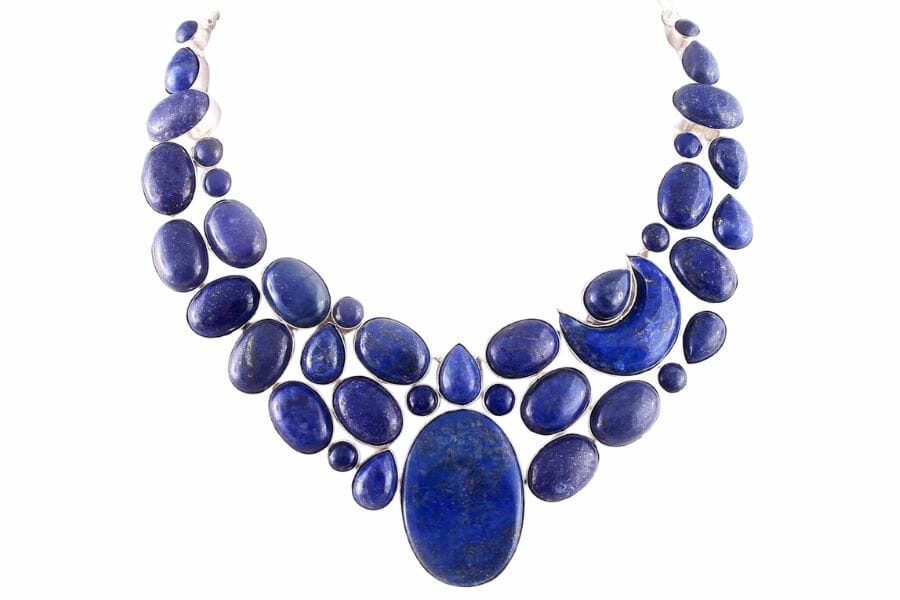Sodalite and lapis lazuli, with their distinctive shades of blue, have fascinated people for centuries. At first glance, they might seem similar. But if you look a little closer, you’ll find that there are so many things that distinguish sodalite vs lapis lazuli.
Whether you’re a jewelry lover or a rockhound trying to make a big discovery, understanding the differences between these two stones is essential.
In this article, we’ll look into the similarities and differences between these two stones. We’ll examine their individual properties, comparing and contrasting their color, appearance, hardness, and more.
We’ll also learn about the unique characteristics that make each stone special and distinct from the other. By the end, you’ll know how to make informed decisions on which one suits your preferences or collection better.
Sodalite vs Lapis Lazuli – The Major Differences
Don’t let sodalite and lapis lazuli fool you. If you look more closely, you’ll see that there are distinct differences in their appearance and makeup that set them apart.
Appearance – Sodalite doesn’t have pyrite flecks
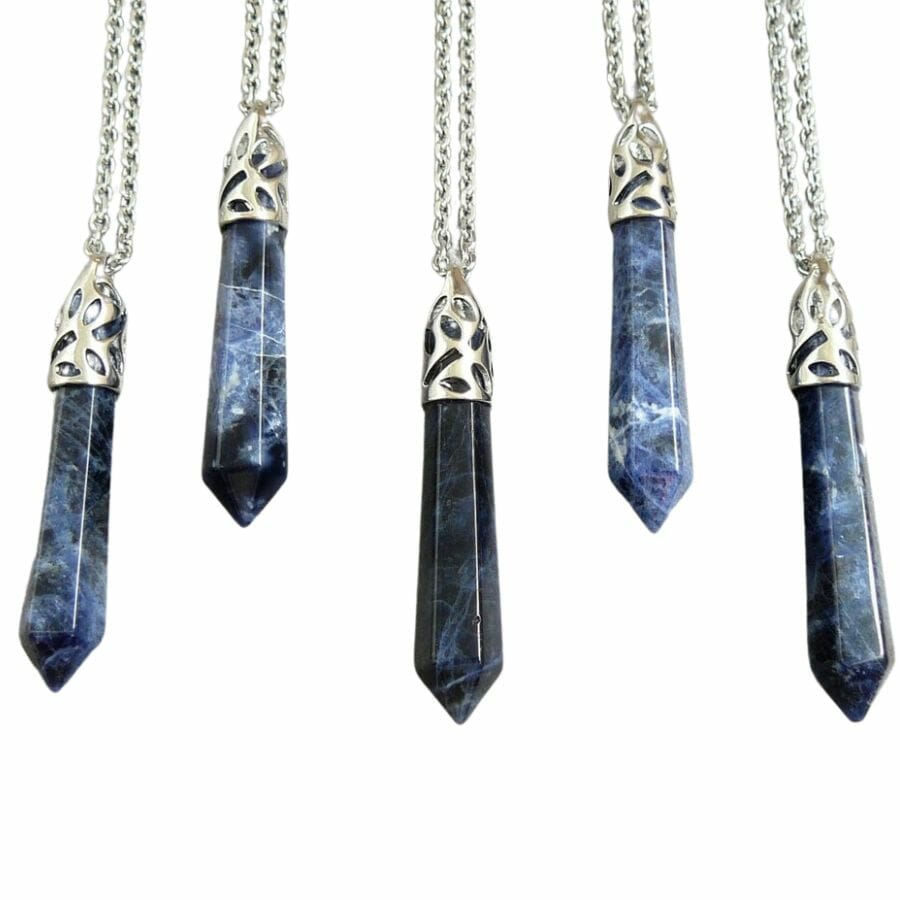
If you look really closely at sodalite and lapis lazuli, the differences between them become more apparent.
Sodalite is known for its veining or mottling effect, featuring white calcite veins that streak across the stone’s surface, creating an intricate pattern.
The white veins contrast beautifully against the blue background, making each piece of sodalite unique and distinctive.
This veining effect can range from small streaks to large patches, contributing to the charm of the stone. Sodalite also sometimes has yellow or brownish streaks.
Lapis lazuli, on the other hand, is prized for its golden flecks of pyrite – also known as “fool’s gold” – across the stone’s surface. These golden specks glitter against the stone’s bright blue hue and look like stars in the night sky.
Apart from the pyrite, lapis lazuli can also have calcite inclusions, appearing as white patches or streaks.
In contrast, sodalite rarely has these sparkly pyrite inclusions. It mostly has calcite veins and splotches.
Colors – Lapis lazuli has a bright ultramarine color
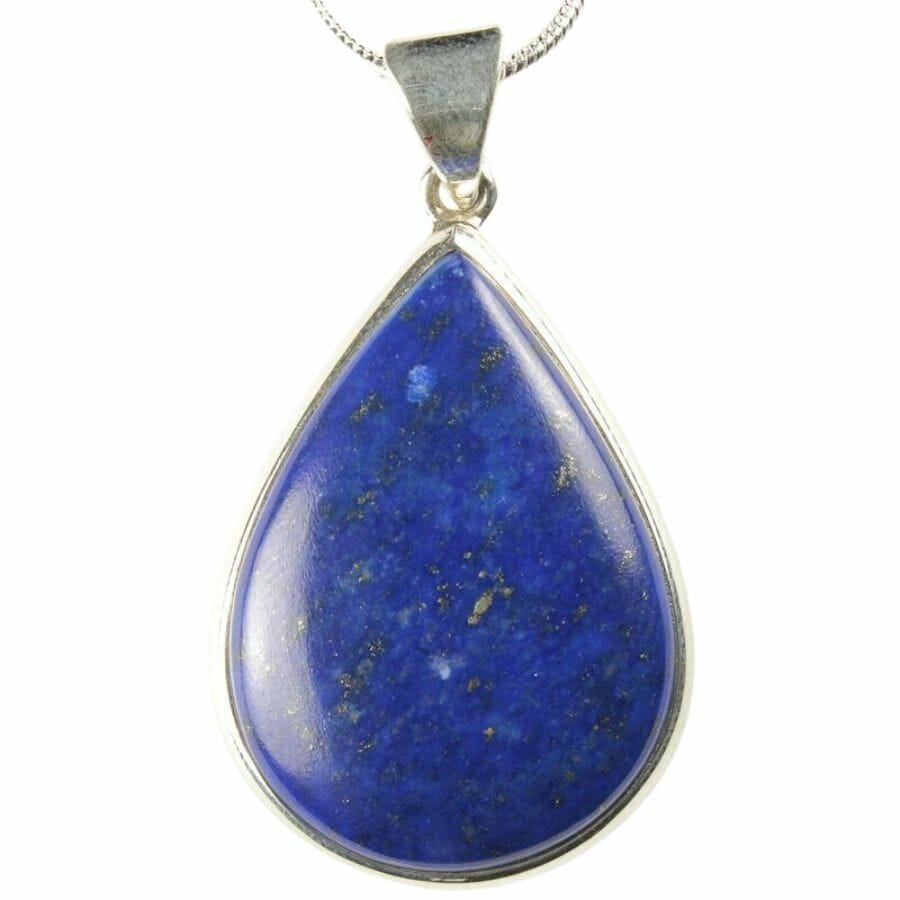
While both sodalite and lapis lazuli are celebrated for their stunning blue hues, the shades and intensities of these blues differ significantly between the two stones.
Sodalite has rich blue color that can range from light to dark. Compared to lapis lazuli, its color is more subtle and not as bright. This gives sodalite a subtle elegance, making it perfect for those who prefer a less flashy aesthetic.
On the other hand, lapis lazuli is known for its intense, vibrant blue hue. It looks like the deepest blues of the ocean on a sunny day.
Streak – Sodalite has a white or pale blue streak
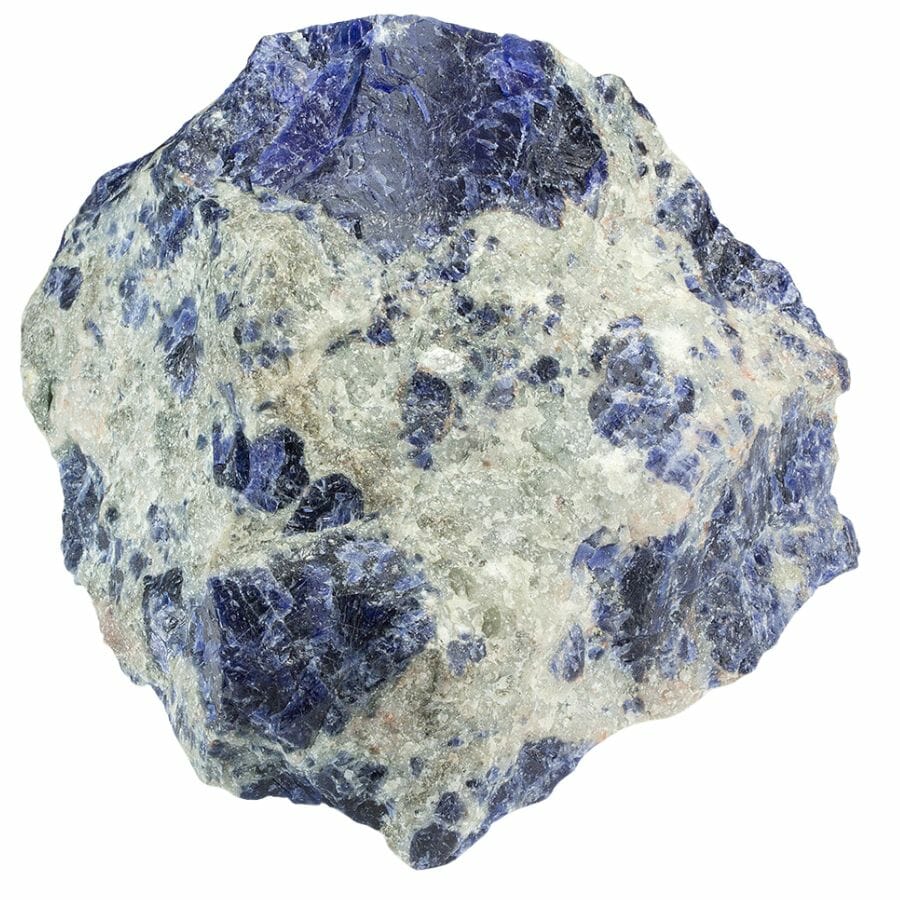
When we talk about the streak of a mineral, we’re referring to the color of the powder that it leaves behind when it’s rubbed against a rough surface. This can be different from the color you see when you just look at the mineral.
The streak test is a simple way to help identify a mineral based on the color it leaves behind when scratched across an unglazed tile, known as a streak plate.
Sodalite, even though it’s blue, actually leaves a white or pale bluish streak. This can be surprising because the streak is so different from the color of the mineral itself.
On the other hand, lapis lazuli leaves a streak that’s very clearly blue.
The difference in the color of the streaks between sodalite and lapis lazuli can help gemologists identify the stones. Despite their similar colors, their streaks are a quick and easy way to tell them apart.
Luster – Lapis lazuli glows like the surface of a wax candle
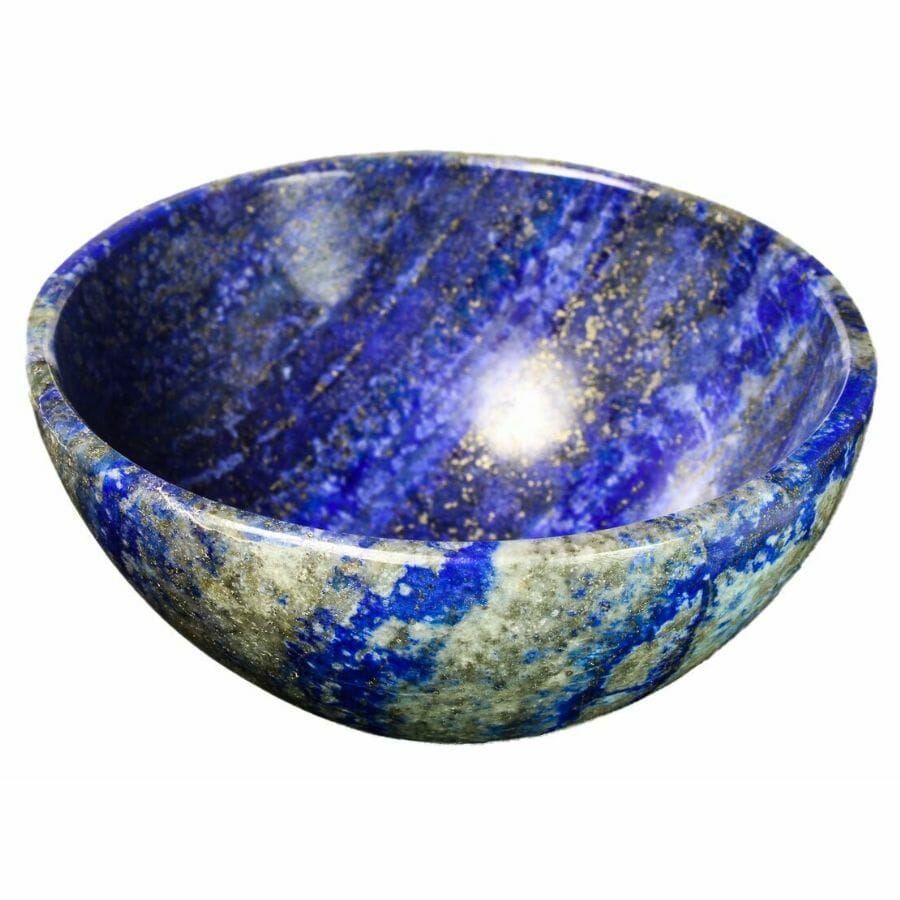
Luster describes the way a mineral reflects light from its surface, and it’s one way we can tell different minerals apart.
Both sodalite and lapis lazuli shine like glass, which means they have a vitreous luster. But the other aspects of their luster can differ.
When polished, sodalite can look like it’s been coated in grease or oil. This kind of shine is described as vitreous to greasy. This gives the stone a somewhat soft glow, making its color look deeper and softer.
On the flip side, lapis lazuli boasts a luster that’s described as vitreous to waxy, like the surface of a candle. This gives lapis lazuli a more subdued glow.
The light reflecting off a polished piece of lapis lazuli also shows off the golden specks of pyrite.
Cleavage – Sodalite breaks in curved surfaces
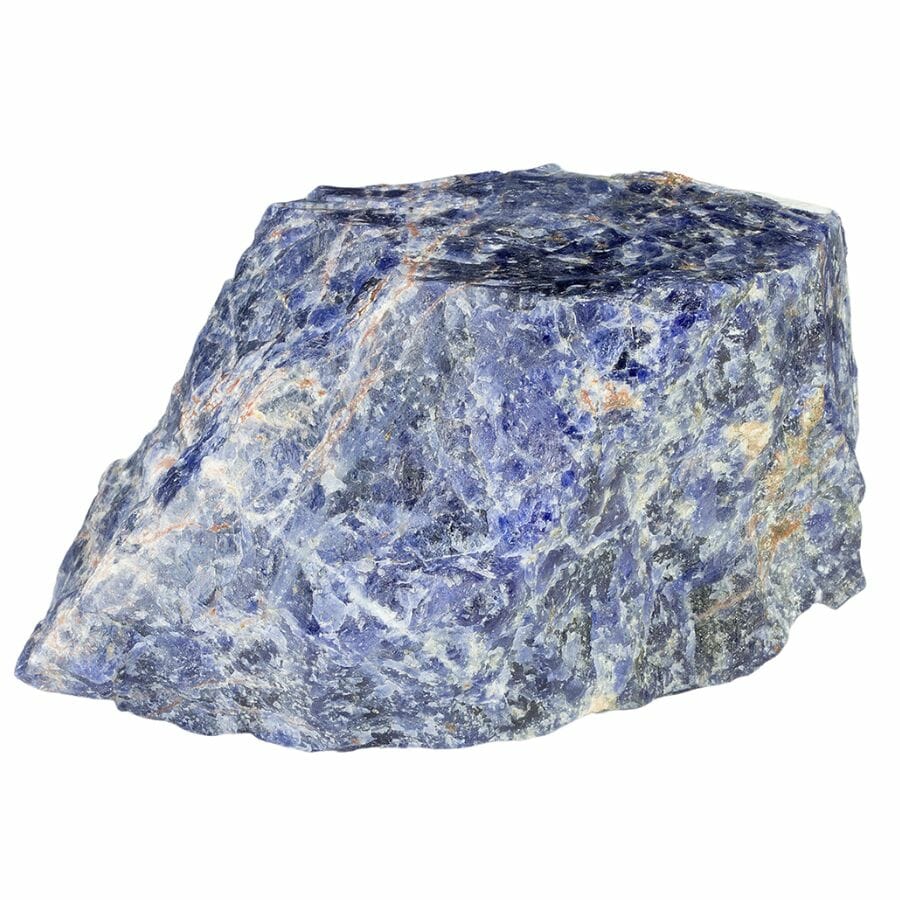
Cleavage in minerals refers to how they break along specific planes when struck. Some minerals have a cleavage that causes them to break into smooth, flat surfaces.
Others break in rough and uneven surfaces, like a tough old piece of wood or sugar candy.
Sodalite has poor cleavage in six directions. That means when it breaks, it doesn’t split neatly and predictably as some minerals do. Instead, it tends to break in an irregular way, or what’s called a conchoidal fracture.
A conchoidal fracture is a type of break in a mineral that resembles the curved shape of a seashell.
Lapis lazuli has no cleavage, which means it doesn’t break neatly like other minerals. However, it can split along its white calcite veins, creating irregular breaks.
Chemical composition – Lapis lazuli is a rock, not a mineral
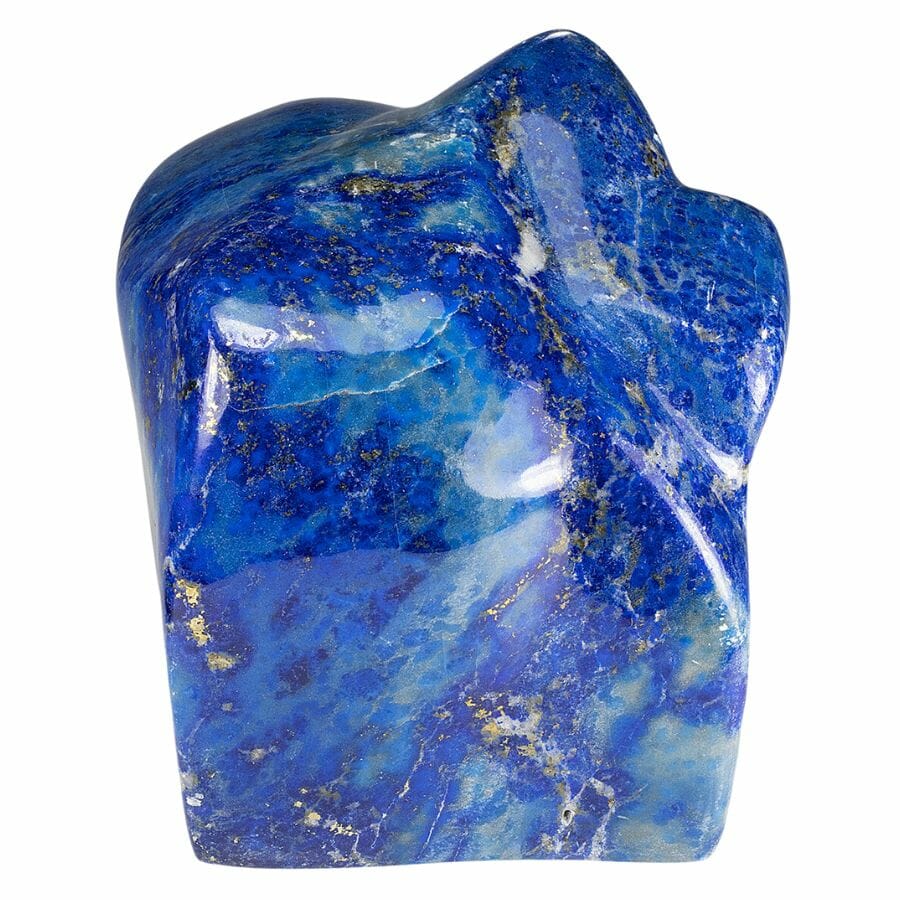
Chemical composition is a fancy term for what things are made of at a tiny, molecular level. Sodalite and lapis lazuli, even though they look similar, have very different chemical compositions.
Sodalite is a mineral that’s classified as a sodium aluminum silicate chloride. In simpler terms, it’s made up of sodium, aluminum, silicon, oxygen, and chlorine atoms.
These different types of atoms combine in a specific way to form the crystal structure of sodalite.
Lapis lazuli, on the other hand, is not a mineral but a rock. That means it’s composed of several different minerals. The main mineral in lapis lazuli is lazurite, which is a complex mineral containing sodium, aluminum, silicon, oxygen, sulfur, and more.
So, while both sodalite and lapis lazuli have the same elements in their chemical compositions, the quantities are different. Plus, lapis lazuli has additional elements like calcium and iron from its other minerals.
Crystal structure – Sodalite has a crystal structure that looks like a cube
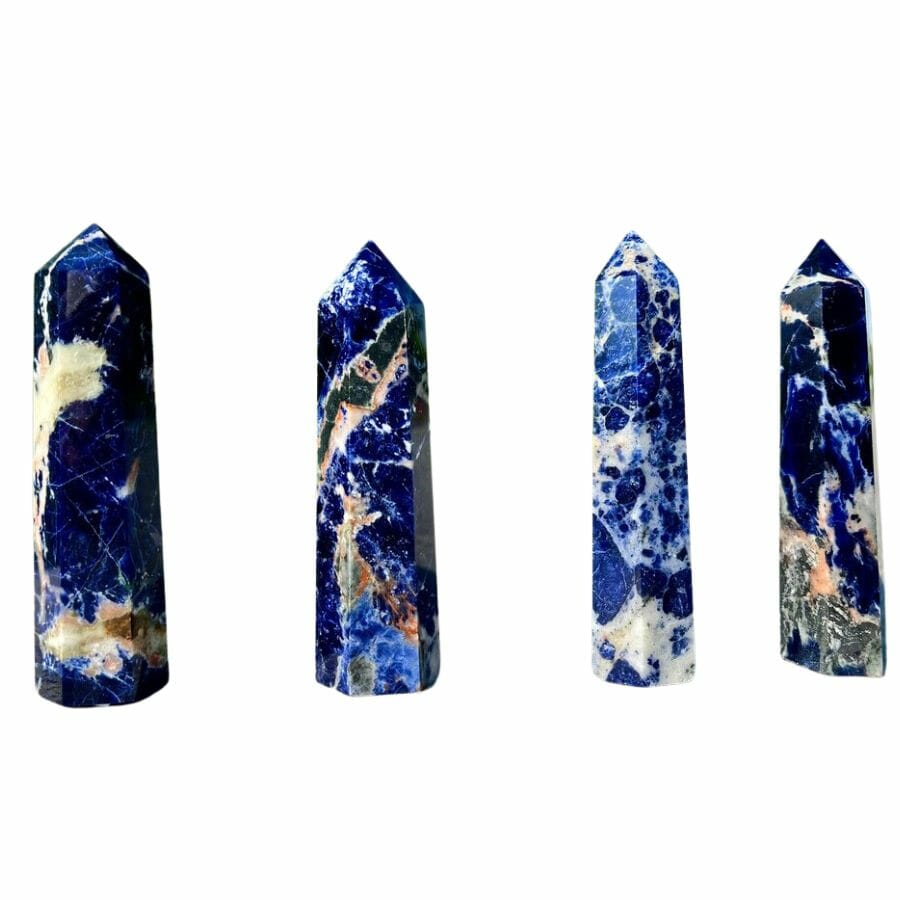
A crystal structure is the way the atoms or molecules in a solid material are arranged in a repetitive pattern.
Sodalite has what’s known as a cubic crystal structure. This means its atoms are arranged in a box-like, three-dimensional pattern. This structure results in the formation of crystals that have twelve sides, described as dodecahedral.
These crystals are often so tiny that sodalite looks more like a mass than a cluster of crystals.
Now, lapis lazuli is a bit more complex because it’s composed of several different minerals. Let’s look at its main component, lazurite. This mineral also has a cubic crystal structure, just like sodalite.
Because lapis lazuli also contains other minerals, such as calcite and pyrite, its overall crystal structure can vary.
Formation – Lapis lazuli forms in metamorphic rocks
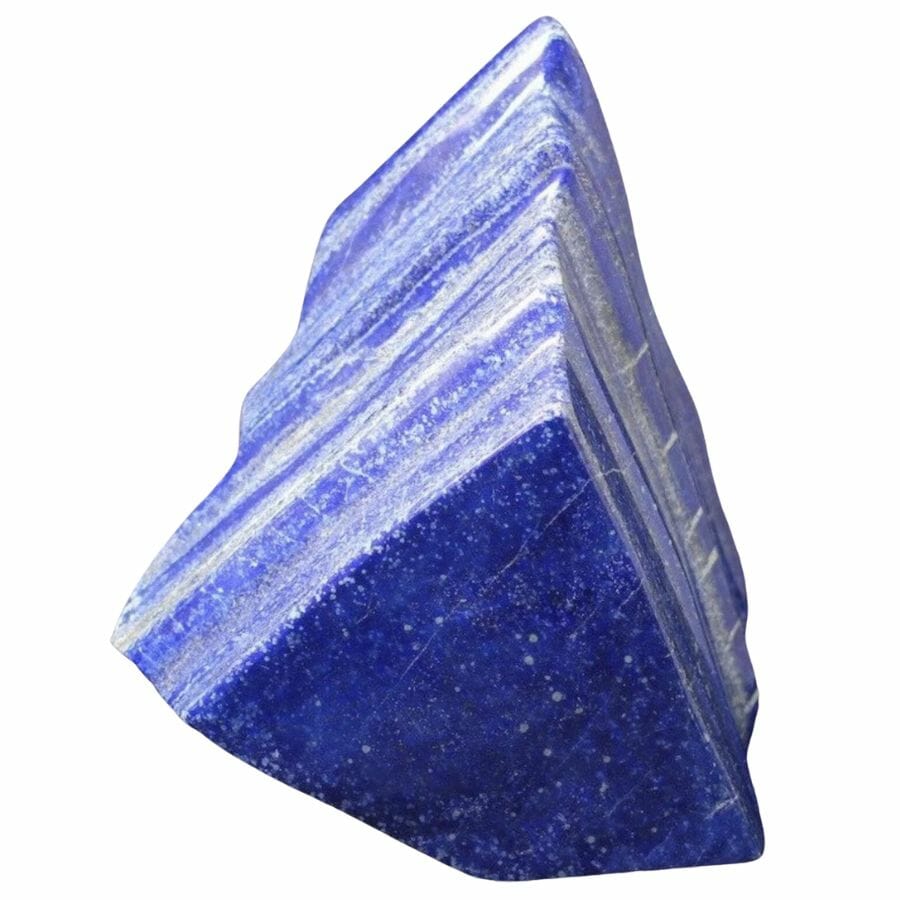
Sodalite and lapis lazuli share some similarities in how they form. Both of these stones are created deep within the Earth under specific conditions.
However, there are some pretty big differences. Sodalite forms in igneous rocks, which are rocks that solidify from molten magma. This usually happens deep underground where the temperature is high.
Over time, as the magma cools down, the atoms start to arrange themselves into the specific pattern that forms sodalite.
Lapis lazuli, on the other hand, forms in metamorphic rocks. Its main component, lazurite, forms in metamorphic rocks deep within the Earth under high pressures and temperatures. The same goes for its calcite and pyrite.
Over millions of years, these minerals combine to form lapis lazuli.
Areas with a lot of igneous and metamorphic rock deposits make up some of the best rockhounding locations.
Fluorescence – Sodalite glows orange under UV light
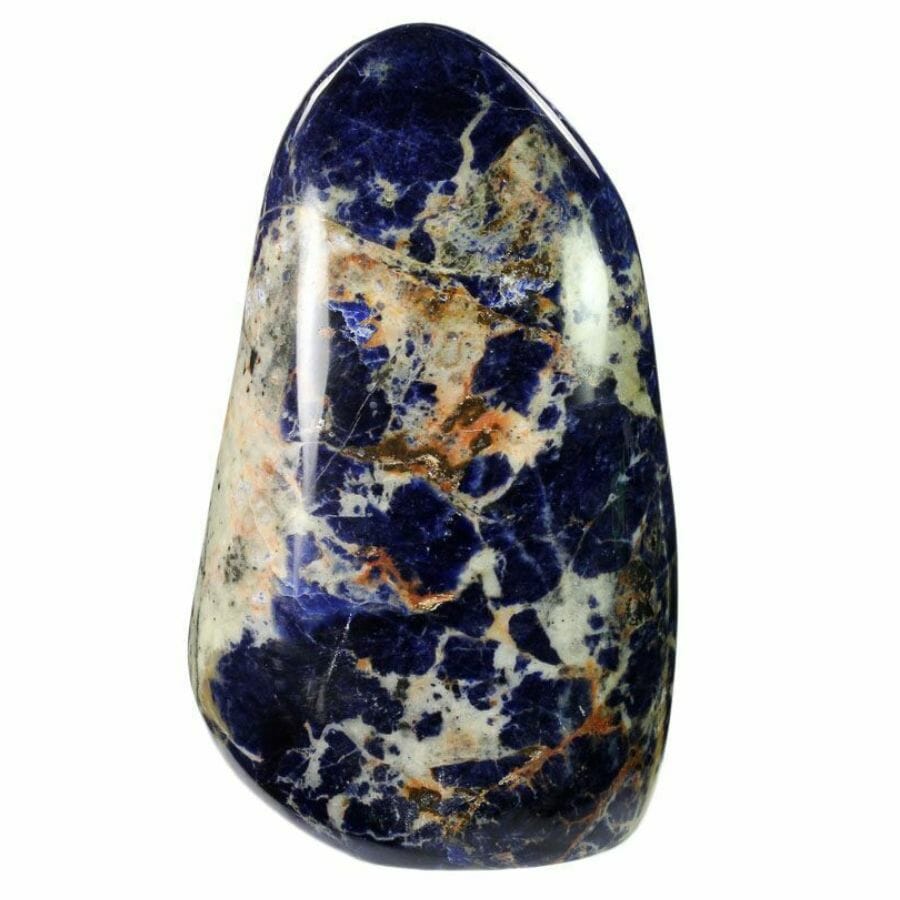
Sodalite and lapis lazuli, while similar in appearance, can be distinguished through a fascinating process called fluorescence. It’s about the way these minerals glow under ultraviolet (UV) light.
The distinct colors they emit under UV light can provide a valuable hint to their identification.
When placed under UV light, sodalite exhibits an exciting phenomenon: it glows an intense orange or red-orange color.
When subjected to the same light, lapis lazuli emits a yellow glow. This happens due to the specific minerals present in lapis lazuli that respond to UV light.
Keep in mind, however, that not every specimen of sodalite or lapis lazuli will fluoresce. The presence and intensity of the glow can depend on the specific composition of the individual piece and the strength of the UV light.
Price – Lapis lazuli is generally more expensive
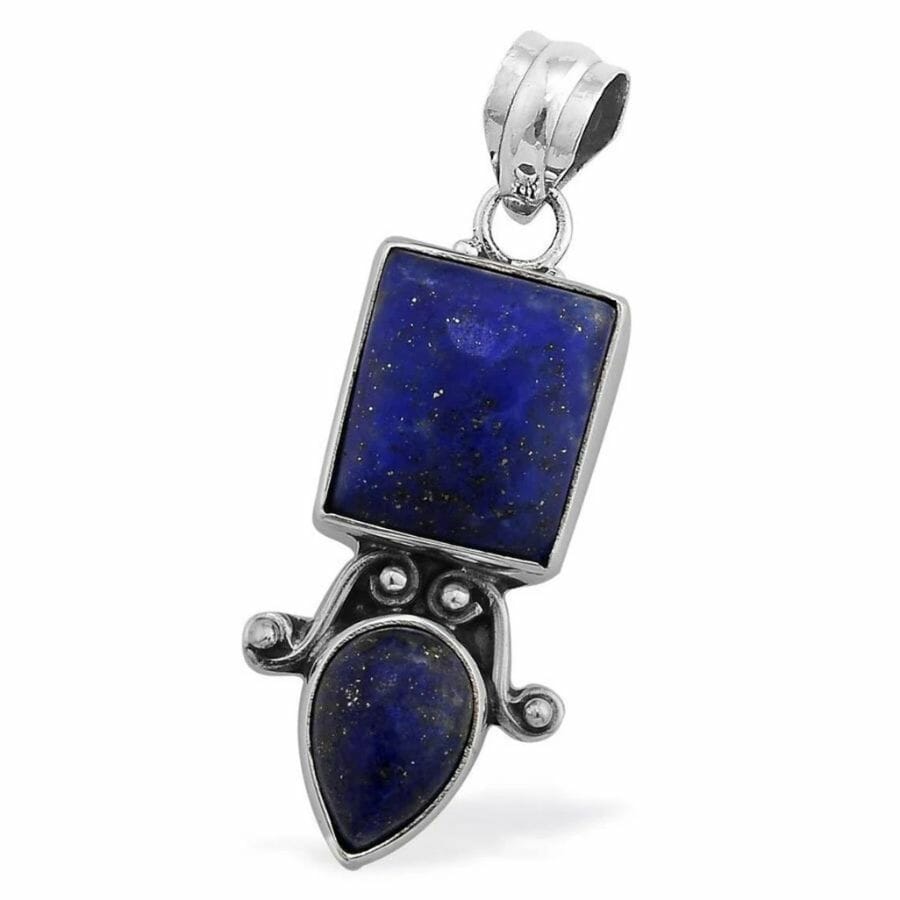
The price of gemstones like sodalite and lapis lazuli can depend on a lot of different factors, like size, quality, and how rare they are. However, in general, lapis lazuli tends to be more expensive than sodalite.
Sodalite is a more common gemstone and is found in large amounts in different parts of the world. This can help keep its price lower.
Of course, the price can go up for higher quality pieces. Overall, though, sodalite is often more affordable.
On the other hand, lapis lazuli is rarer and more prized, which often makes it pricier. High-quality lapis lazuli can be pretty pricey. This is especially true for pieces with a lot of the sparkly pyrite inclusions.
This has been a treasured gemstone for thousands of years, and its rich, deep blue color is highly sought after.
So, while both of these gemstones are beautiful, if you’re shopping on a budget, you might find that sodalite is the more wallet-friendly choice.
Location – Sodalite is found in more countries
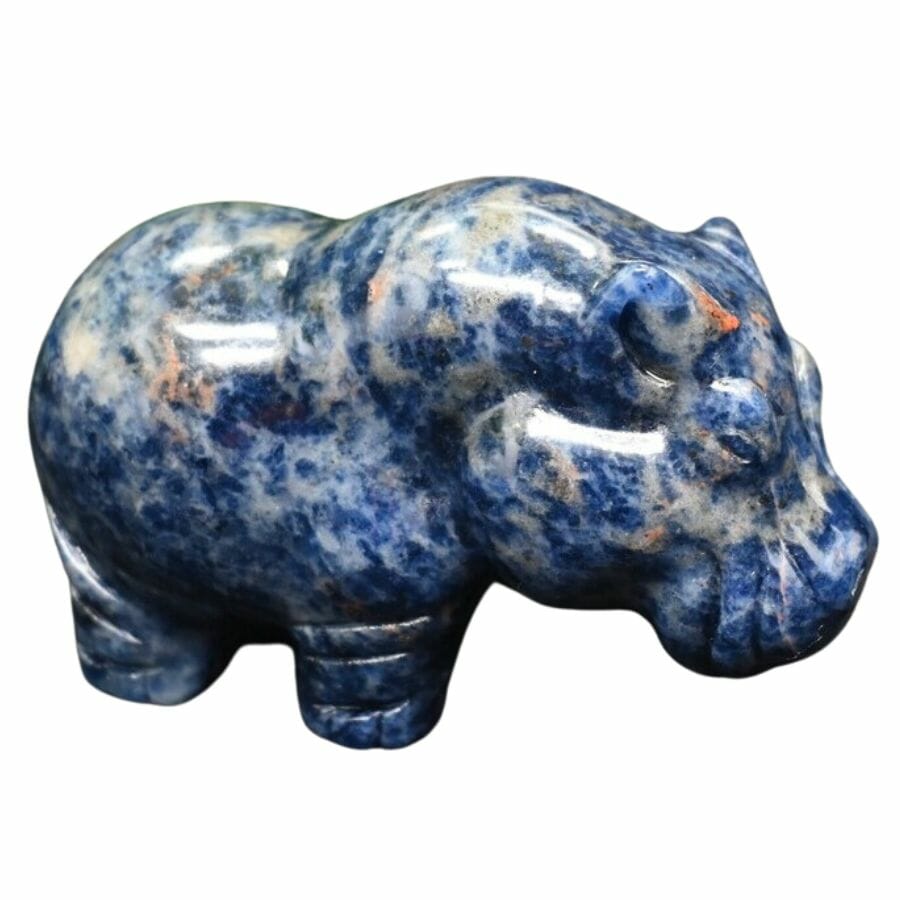
Sodalite and lapis lazuli are found in different parts of the world, adding to their unique characteristics. Sodalite, which showcases its vibrant blue hues, has been discovered in various locations globally.
Significant sodalite deposits are found in Brazil, Canada, and Namibia, as well as Maine and Arkansas.
The differences in these locations can lead to slight variations in the stone’s color and pattern, making each piece of sodalite unique.
Lapis lazuli, on the other hand, has a more exclusive geographical presence. Afghanistan is the most prominent source of lapis lazuli, and the specimens from this region are highly prized for their intense color.
Other countries where lapis lazuli is found include Chile and Russia, as well as the United States, Canada, and Pakistan. Wherever you may be in the world, there’s likely a gem mine near you.
Lapis Lazuli vs Sodalite – The Similarities
Sodalite and lapis lazuli have some similarities that go beyond surface level. Now that we understand their unique traits, we can look at the things they have in common.
Hardness – Both stones have almost the same hardness
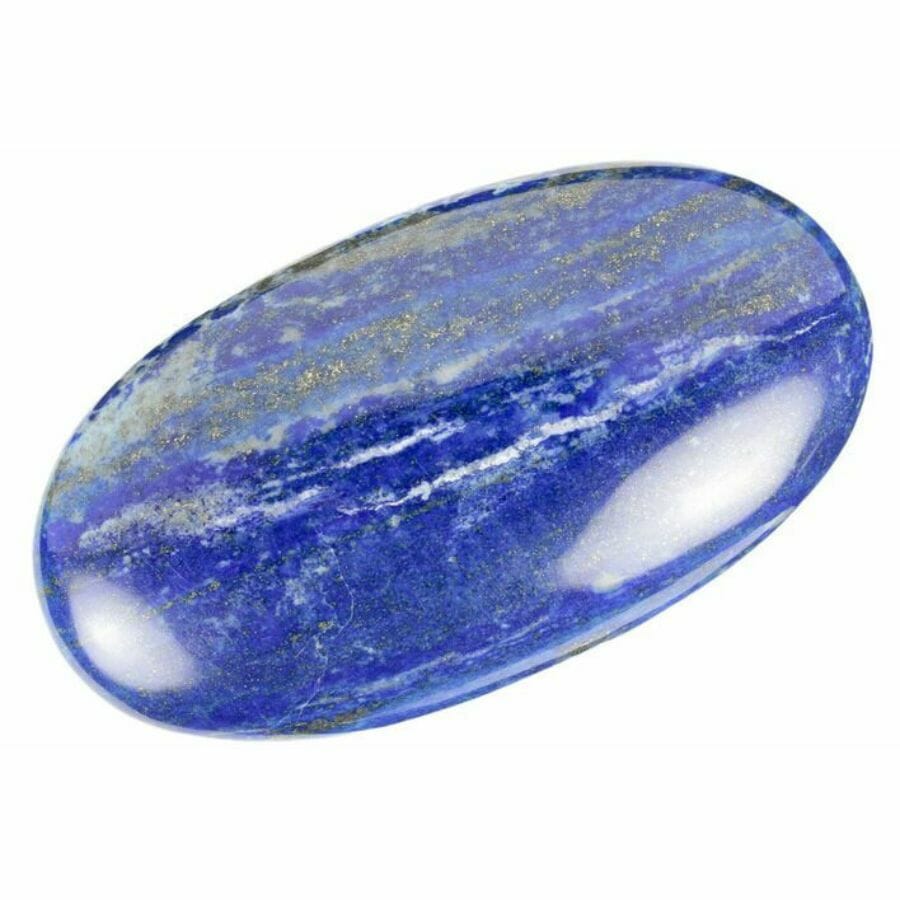
The Mohs hardness scale is a tool used to compare the hardness of minerals. The scale ranges from 1 (softest, like talc) to 10 (hardest, like diamond).
This helps identify minerals and understand their properties for practical use.
Sodalite, in particular, has a hardness rating of around 5.5 to 6 on the Mohs scale. Lapis lazuli has a hardness of around 5 to 6. It thus has roughly the same hardness as sodalite.
The hardness of these stones can affect how they are used in jewelry and can help gemologists distinguish between them.
Density – They have similar densities
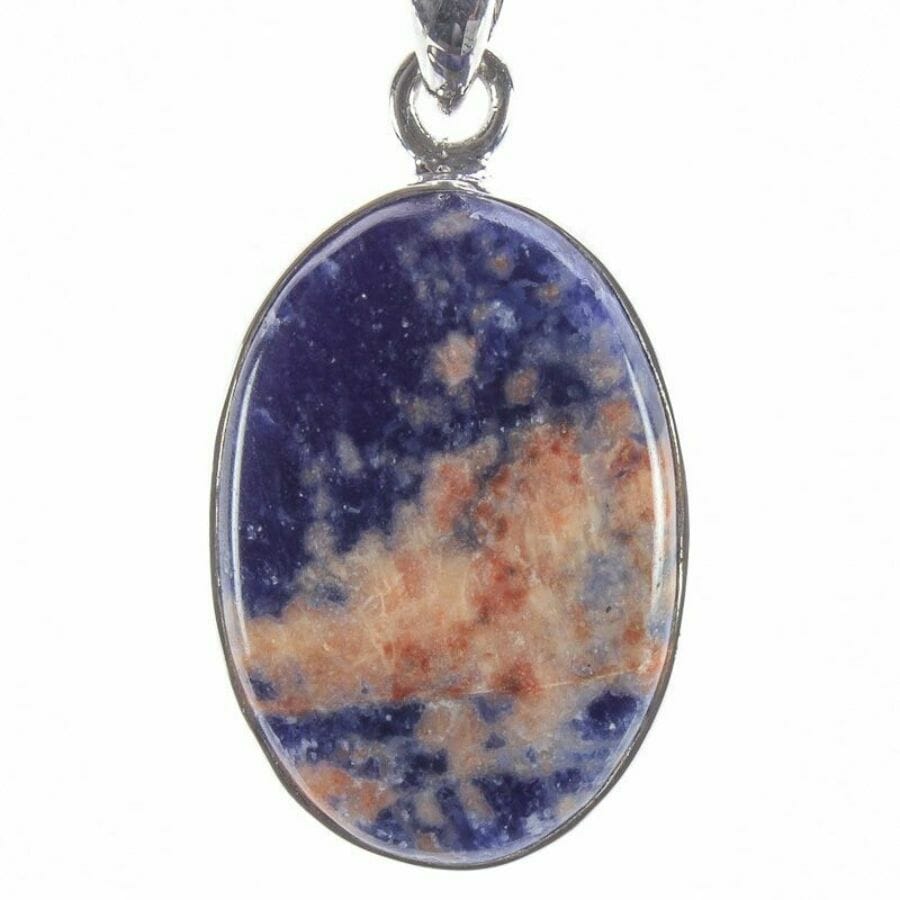
Density refers to how much matter, or stuff, is packed into a certain amount of space. Think of it as a measure of how heavy something feels for its size.
The densities of sodalite and lapis lazuli are quite similar, despite being different types of stones.
Sodalite has a density that ranges from about 2.1 to 2.4 grams per cubic centimeter.
Lapis lazuli, meanwhile, has a density that ranges from about 2.7 to 2.9 grams per cubic centimeter. This makes it slightly heavier than sodalite, but still within the same general range.
Conductivity – Neither stone is a good conductor
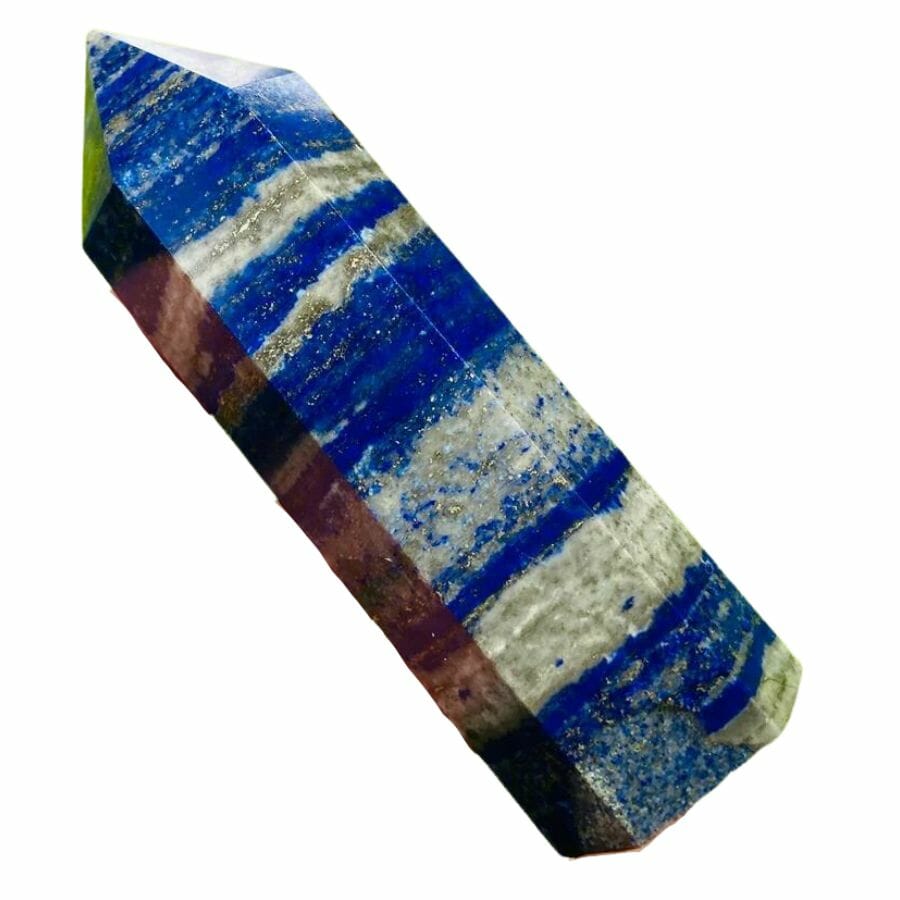
While sodalite and lapis lazuli are different in many ways, they share the common characteristic of being poor conductors of electricity.
Conductivity is a measure of a material’s ability to allow the flow of electric charge. Sodalite and lapis lazuli in particular don’t conduct electricity well and are considered poor conductors.
Sodalite’s chemical structure doesn’t provide a path for electricity to move through it, which means it won’t conduct electricity.
Lapis lazuli also doesn’t conduct electricity well. Even though it contains metallic minerals like pyrite, the overall composition of lapis lazuli doesn’t allow for the easy flow of electric charge.
Magnetism – Both are non-magnetic
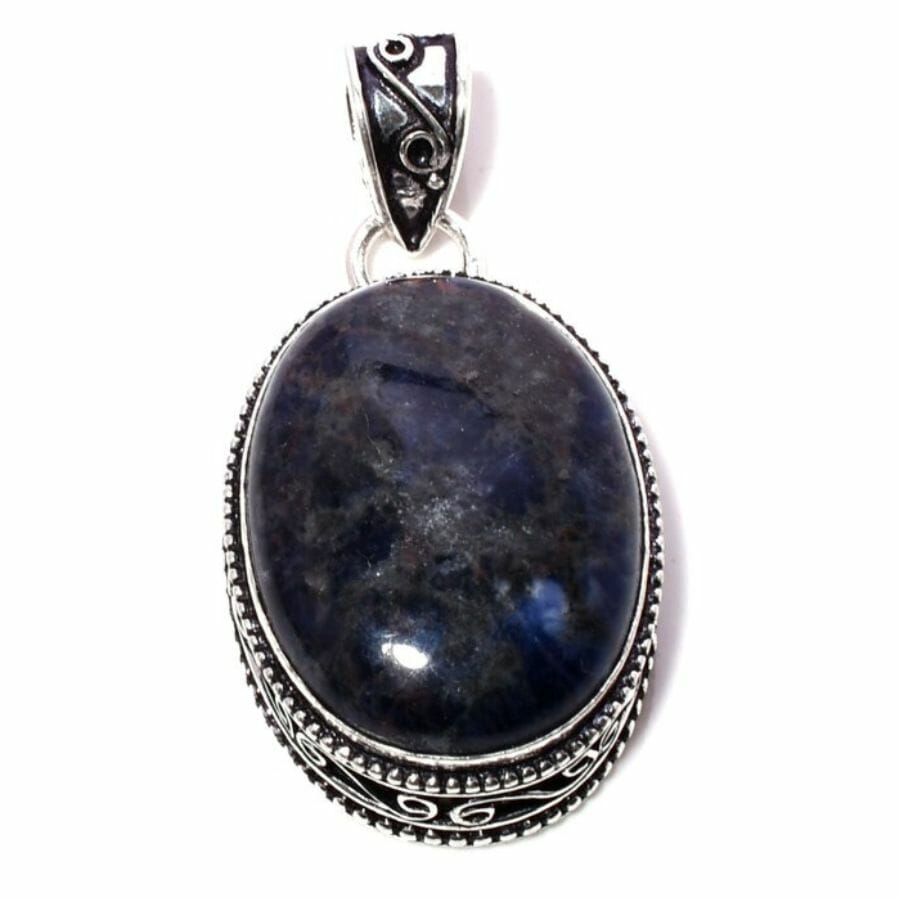
Magnetism in minerals refers to the ability to attract or repel other magnetic substances. Sodalite and lapis lazuli both have inert to weak magnetism.
This means if you were to place a magnet next to a piece of sodalite or lapis lazuli, it wouldn’t be attracted to the magnet. The atomic structure of sodalite doesn’t allow it to have much magnetism.
Similarly, lapis lazuli is also non-magnetic or weakly magnetic. It depends on its mineral composition. However, it generally does not have enough magnetic material to show any significant magnetic properties.
The Easiest Ways to Tell Sodalite and Lapis Lazuli Apart
Telling lapis lazuli vs sodalite can be quite simple once you know what to look for. There are some key differences that make it easy to distinguish between the two.
Use two streak plates of different colors
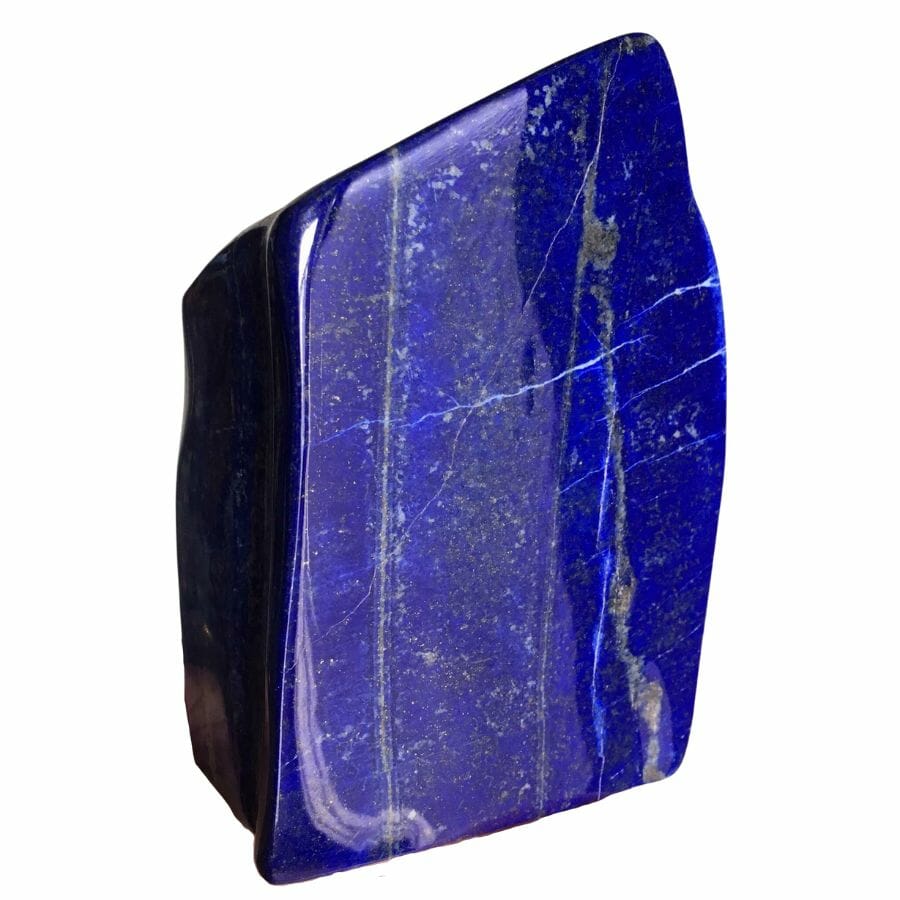
Despite their similar blue color, you can differentiate sodalite from lapis lazuli using a simple streak test.
To perform the test, you’ll need two types of streak plates: one white and one dark-colored, such as blue. For sodalite, use the dark-colored plate because its streak is usually white to pale blue. It’s thus easier to see against a darker background.
Gently rub the stone across the dark-colored plate, paying attention to the color of the streak it leaves behind. If it leaves a visibly light-colored streak, then you’re likely holding a piece of sodalite.
In contrast, use the white streak plate to test lapis lazuli. This is because lapis lazuli usually leaves a blue streak that shows up better against a white background.
Again, rub the stone across the plate, taking note of the resulting streak color. If the streak is a visible blue or dark color, then you’re likely holding a piece of lapis lazuli.
It’s essential to remember that performing a streak test can potentially damage the surface of the mineral. If the specimen is valuable or part of a collection, you might want to use a different method.
Examine it under UV light
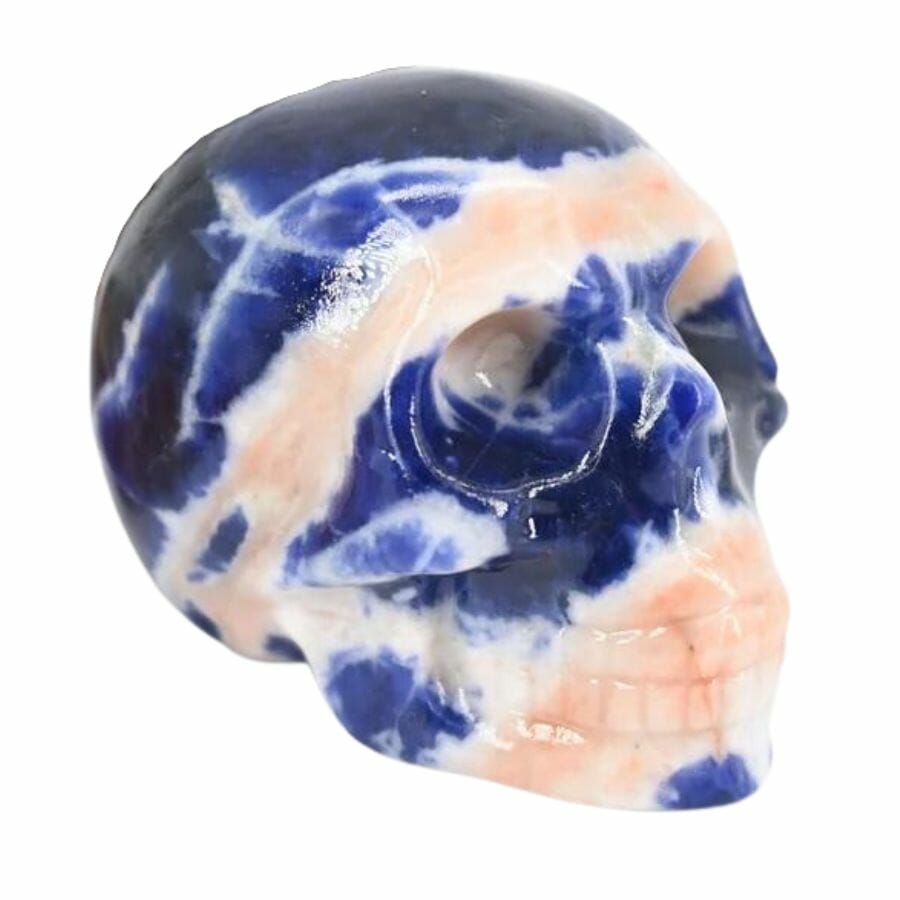
The third difference to look for is the stone’s reaction to UV light. Remember that both stones have a property called fluorescence, where they glow under ultraviolet light.
Sodalite usually fluoresces a bright orange or red color, while lapis lazuli typically fluoresces a golden yellow. If you have a black light and the stone glows orange, it’s likely sodalite. If it glows yellow, it’s probably lapis lazuli.
Check for pyrite inclusions
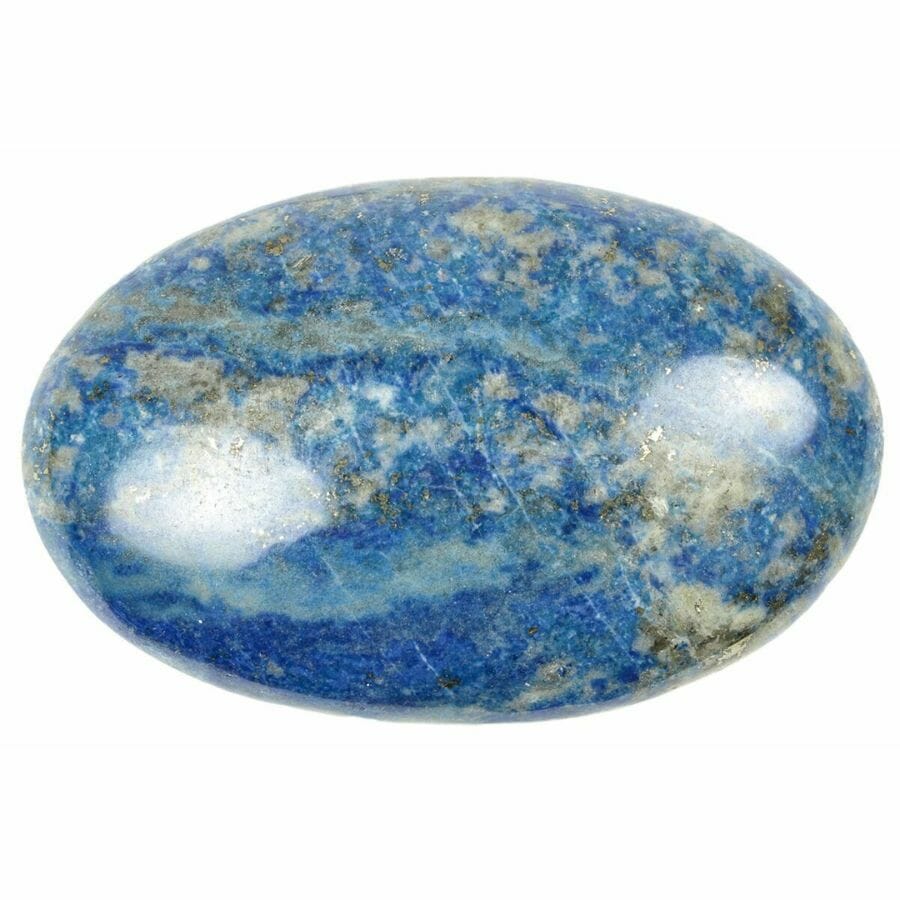
Sodalite usually appears somewhat cloudy or mottled, even though it’s mostly blue. Lapis lazuli, though, is often more uniformly colored and may be veined or streaked with white calcite.
If there are shiny specks of gold or silver in the stone, that’s another clue you’re looking at lapis lazuli. It often contains specks of pyrite, which appear gold and metallic.
Only lapis lazuli has pyrite inclusions. Sodalite doesn’t.
If you want to tell sodalite vs lapis lazuli, look for sparkling flecks of pyrite. If a stone has it, it’s likely to be lapis lazuli. If it only has calcite veins, then it’s likely sodalite.

